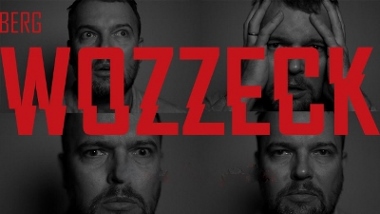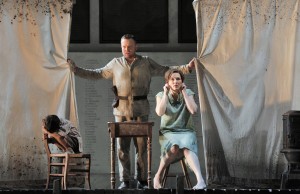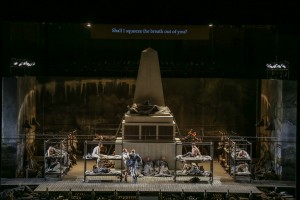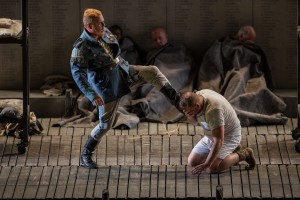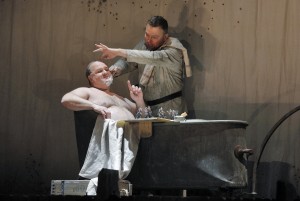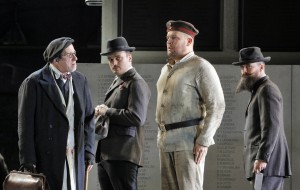WHAT’S UP WITH WOZZECK?
Alban Berg’s Wozzeck must have been quite shocking in 1925 at its first public performance in Berlin. Why? Musically, it’s regarded as the first opera in the 20th-century avant-garde style, notable for its atonality and use of sprechgesang (more like spoken song than sung speech). They’re both techniques made famous by Berg’s teacher Arnold Schoenberg.
Dramatically, Wozzeck depicts poor, working class people and makes no moral judgments about their character. It’s about as far afield from the aristocratic, moralizing entertainment of Rossini’s Cinderella and Mozart’s Marriage of Figaro as one can get. Yet, what was shocking and provocative in 1925 is rather more humdrum in 2015.
Wozzeck comes across strongly as a product of its time. Berg wrote the opera in the aftermath of World War I. He was understandably horrified by the war, which he himself had served in. Thus, his treatment of the title character Wozzeck is undeniably sympathetic, despite the soldier’s murder of his wife and subsequent suicide.
If the opera offers any excuse for its protagonist’s violent behavior, it is Wozzeck’s poverty. And this just doesn’t ring true anymore, if it ever did. Are poor people any more evil than the rich? And why is there so much discussion of morality and religion? Wozzeck quotes from the Bible, and his common law wife Marie turns to it for answers. Both are plagued by guilt and unable to find forgiveness.
Under Sir David McVicar’s direction, Wozzeck comes across as disturbingly dark, macabre and manic. In other words, he heightens and amplifies those elements already present in Berg’s jarring score. Possible influences include Ingmar Bergman and David Lynch, and the gigantic magnifying glass used by the doctor calls to mind the haunting eye of Edgar Allan Poe’s “Tell-Tale Heart.” Above all else is the stylization of Epic Theatre, which Brecht (a near-Berg contemporary) employed to shake audiences from complacency. Here, combined with the score, it merely makes the experience all the more alienating.
Fitting right in with Brecht and German Expressionism, Vicki Mortimer’s monochromatic period designs add to the grimness of the production. The only substantial splash of color is provided by the blood-red moon of the final act, perhaps the most effective feature of Paule Constable’s lighting design. It was no doubt intentional, but Mortimer’s choice of half curtains–while allowing for some interesting movement across the stage–failed to hide much of the backstage lighting, the rising and falling set pieces, or the war memorial that dominates center stage.
The dissonant, unsettling music of the Second Viennese School is definitely not to everyone’s taste, but for some, it will be Wozzeck’s principal attraction. And they will not be disappointed. The opera boasts an excellent, if largely unknown, cast led by Tomasz Konieczny in the title role. Joining him are three Germans, Angela Denoke as Marie, Gerhard Siegel as the captain, and Stefan Vinke as the drum major, and British bass Brindley Sherratt, recently seen at Lyric as Don Bartolo in The Marriage of Figaro, as the bean-shoveling Doctor.
In addition to the usual chorus under the direction of Michael Black, Wozzeck features some members of the talented Chicago Children’s Choir and the young Zachary Uzarraga as Wozzeck and Marie’s son. Sir Andrew Davis conducts.
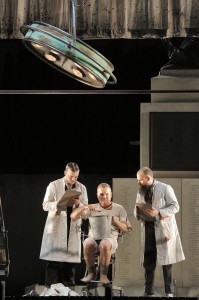 photos by Cory Weaver and Andrew Cioffi
photos by Cory Weaver and Andrew Cioffi
Wozzeck
Lyric Opera of Chicago
Civic Opera House
20 N. Wacker Drive
ends on November 21, 2015
for tickets, call 312.827.5600 or visit Lyric Opera
for more shows, visit Theatre in Chicago
